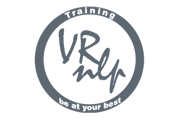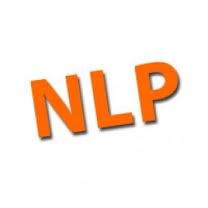NLP CASE STUDY 2
CASE STUDY 2
SITUATION
With the business climate changing & moved towards globalization, like many organization XYZ company too has changed its culture and style. Employees no more could ride on the comfort of just loyalty & seniority. Productivity & adaptability decided sustainability.
In this situation Ragu , a long time employee has started feeling left behind & insecure. He believes he cannot work with computers, SAP, 5S & so on ; He starts feeling humane touch is now lost; Ragu has started believing company has become task oriented & no more people oriented, and so he may be shown the door anytime.
With this fear he approaches his boss seeking assistance & understanding, help.
UNDERSTANDING THE SITUATION
Ragu has lost confidence in his ability to cope up with the changing scenario. He has poor self image. If he is allowed to continue with this frame of mind he will certainly attract what he doesn’t want to happen.
Ragu must be helped to restore confidence in him & also repose faith in the organization.
PROCESS OF NLP INTERVENTION FOR COUNSELING
One of the fundamental beliefs of NLP is ‘People already have all the resources they need’
THINKING according to NLP: – NLP has minutely studied people when they were thinking.
According to NLP, this is also a fact, when people think they form pictures, words/sounds, feelings inside their head about the subject of thinking.
Thus there is VISUAL thinking, AUDITORY thinking, and KINESTHETIC thinking.
Five senses seeing, hearing, feeling, smelling, tasting are the modes by which a man senses the world and sends it to brain where he makes sense of the sensory impulses.
In the process of giving meaning to this sensory experience he makes his perception and that perception becomes his reality.
For practical purpose NLP takes smelling & tasting as feeling; so man has three modes of experiencing world – VISUAL, AUDITORY, KINESTHETIC.
For each of these modes there are sub- modes embedded within.
Visual Sub Modalities: – size of the picture, color of the picture, brightness, still/moving, 2D/3D, distance of the picture from self.
Auditory Sub modalities: – volume, tone, intermittent/ continuous, location, distance from self
Kinesthetic sub modalities: – temperature, pressure, location, texture, intensity, distribution
These SUB MODALITIES are the building blocks of an experience. In other words sub modalities are the ingredients of an experience; structure of an experience. Sub modalities are the internal representation of an experience.
What is the difference between how we produce the state of depression or the state of joy? The main difference is in the way we structure our internal experience.
If an experience is joyous NLP does not simply see the content (what has given joy, say ice cream) but at the internal representation (of ice cream).
Likewise for sorrow, bitterness, disappointment etc.
If one wants to change one’s bitterness of an event, NLP asks the subject first to take an inventory of sub-modalities & then by altering the sub-modalities of visual auditory, kinesthetic one can gradually reduce the degree of bitterness and finally move to a better situation.
Coming to the case study:-
Now to help Ragu develop faith in his ability to learn & adapt to the changing scenario, Ragu must be made to believe he is capable of learning, he is capable coping.
Ragu must be asked to recall a situation from his past when he learnt something new & he was thrilled by it; perhaps something he attempted on his own and gained confidence.
Now Ragu must be asked to relive that past situation now inside his head; see hear feel all those he experienced then; He must also notice the emotional state as he does this process of figuring out the structure of that experience.
Having noted the entire sub – modalities, Ragu must now gradually substitute these sub modalities for the work situation and check for the emotional response.
Surprisingly Ragu will find that he is capable of changing learning coping with the current scenario; His self image will get brightened.
SUMMARY
SUB MODALITY is a unique finding of NLP; anything & everything of subjective experience can easily be changed.
To change a repulsive experience to an acceptable experience, inside your head, simply push the distance of the picture, dim it further, make it still, reduce the volume of sound, make the sound intermittent, and reduce the density & intensity of feeling; that’s all. It is amazing that the quality of experience changes.
By altering the structure of experience quality of experience can be changed.
One can always feel in control in any situation by gaining familiarity and proficiency in identifying and altering sub modalities appropriately.
It is not what happens in life that matters. What we do with what happens in life that matters.

